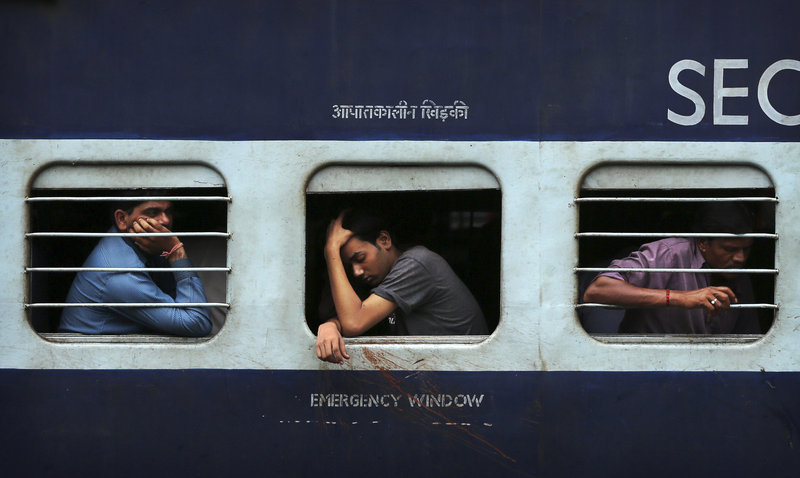NEW DELHI – Electric crematoria were snuffed out with bodies inside, New Delhi’s Metro shut down and hundreds of coal miners were trapped underground after three Indian electric grids collapsed in a cascade Tuesday, cutting power to 620 million people in the world’s biggest blackout.
While Indians were furious and embarrassed, many took the crisis in stride, inured by the constant – though far less widespread – outages triggered by the huge electricity deficit stymieing the development of this would-be Asian power.
Hospitals, factories and the airports switched automatically to their diesel generators during the hours-long cut across half of India. Many homes relied on backup systems powered by truck batteries. And hundreds of millions of India’s poorest had no electricity to lose.
“The blackout might have been huge, but it wasn’t unbearably long,” said Satish, the owner of a coffee and juice shop in central Delhi who uses only one name. “It was just as bad as any other five-hour power cut. We just used a generator while the light was out, and it was work as usual.”
The crisis was the second record-breaking outage in two days. India’s northern grid failed Monday, leaving 370 million people powerless for much of the day, in a collapse blamed on states that drew more than their allotment of power.
At 1:05 p.m. Tuesday, the northern grid collapsed again, energy officials said. This time, it took the eastern grid and the northeastern grid with it. In all, 20 of India’s 28 states – with double the population of the United States – were hit in a region stretching from the border with Myanmar in the northeast to the Pakistani border about 3,000 kilometers (1,870 miles) away.
Hundreds of trains stalled across the country and traffic lights went out, causing widespread jams in New Delhi. West Bengal Chief Minister Mamata Banerjee asked office workers to go home and rushed generators to coal mines to rescue trapped miners.
Sahiba Narang, 17, was taking the Metro home because school bus drivers were on strike, “but this power failure’s messed up everything.”
S.K. Jain said he was on his way to file his income tax return when the Metro closed. The 54-year-old held his head, distraught that he would almost certainly miss the deadline. Hours later, the government announced it was giving taxpayers an extra month to file because of the chaos.
By evening, power had been restored to New Delhi and the remote northeast, and much of the northern and eastern grids were back on line. Electricity officials said the system would not be back to 100 percent until Wednesday. Power Minister Sushil Kumar Shinde said the new crisis had the same root as Monday’s collapse.
“Everyone overdraws from the grid. Just this morning I held a meeting with power officials from the states and I gave directions that states that overdraw should be punished. We have given instructions that their power supply could be cut,” he said.
But others were skeptical of Shinde’s explanation, saying that if overdrawing power from the grid caused this kind of collapse, it would happen all the time.
“I just can’t believe that there is no system in place to check whether the states are drawing more than their limit or not,” said Samiran Chakraborty, head of research at Standard Chartered, a financial services company.
At a contentious news conference, R.N. Nayak, chairman of Power Grid Corp., which runs the nation’s power system, said his staff was searching for the cause of the problem and pleaded for patience.
“We have been running this grid for decades. … Please trust us,” he said.
The blackouts came amid consumer anger with the recent increase in power fees, including a 26 percent hike in Delhi, that government officials said were needed to pay for the steep rise in fuel costs.
Send questions/comments to the editors.



Success. Please wait for the page to reload. If the page does not reload within 5 seconds, please refresh the page.
Enter your email and password to access comments.
Hi, to comment on stories you must . This profile is in addition to your subscription and website login.
Already have a commenting profile? .
Invalid username/password.
Please check your email to confirm and complete your registration.
Only subscribers are eligible to post comments. Please subscribe or login first for digital access. Here’s why.
Use the form below to reset your password. When you've submitted your account email, we will send an email with a reset code.